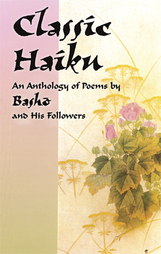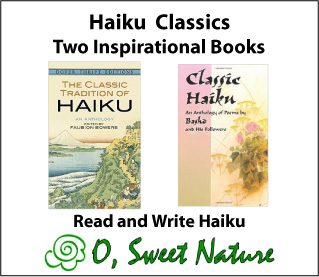How to Write Haiku Poetry
Learn how to create your own lovely Haiku poems.
Haiku seems so simple, but, like the Japanese Masters, you could spend a lifetime
creating the perfect Haiku form. Follow the steps in this downloadable article
and begin your quest for beauty in words and vision.
FREE! Download this great instructional page FREE!
creating the perfect Haiku form. Follow the steps in this downloadable article
and begin your quest for beauty in words and vision.
FREE! Download this great instructional page FREE!
How to Write a Haiku Poem
|
Want to read more about Haiku?
These are recommended O, Sweet Nature Books about Haiku HERE
These are recommended O, Sweet Nature Books about Haiku HERE

Classic Haiku
Matsuo Basho (1644–1694) and other masters evoke elements of the natural world to conjure up timeless moods and emotions. |


